Exercise is a powerful tool for maintaining overall health and well-being. It benefits the body in many ways, from improving cardiovascular health to boosting mental clarity, increasing energy, and helping to prevent chronic conditions. Whether you’re looking to manage your weight, improve your strength, or boost your mood, exercise can be an essential part of a healthy lifestyle.
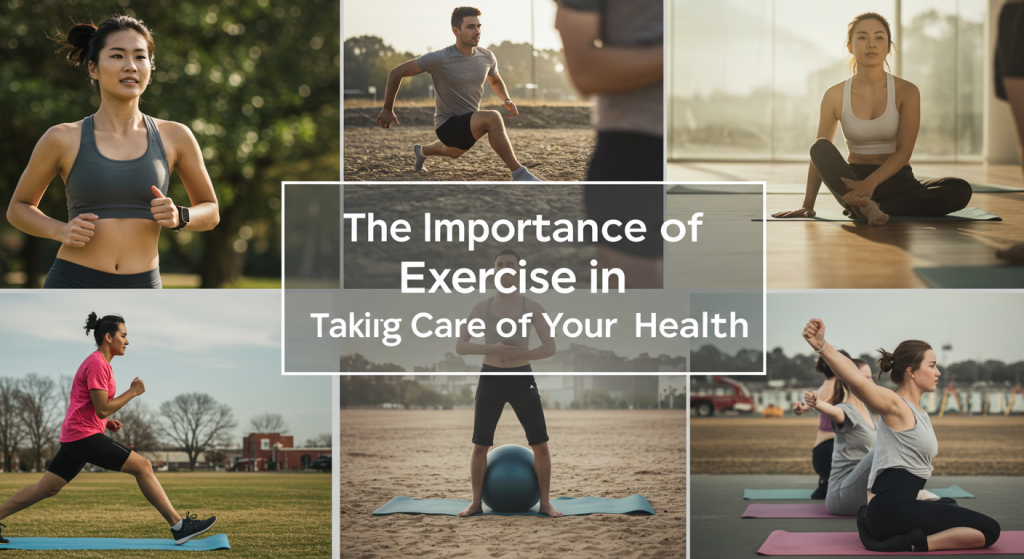
1. Physical Health Benefits of Exercise
The physical benefits of exercise are well-documented. Engaging in regular physical activity can improve various aspects of physical health:
-
Cardiovascular Health: Regular exercise strengthens the heart and improves circulation. Activities like walking, jogging, cycling, and swimming help lower blood pressure, reduce cholesterol levels, and improve heart function. This leads to a lower risk of heart disease, stroke, and other cardiovascular conditions.
-
Weight Management: Exercise is crucial for maintaining a healthy weight. Physical activity helps burn calories, build muscle, and reduce fat, which in turn supports a healthy body composition. Regular exercise also increases metabolism, making it easier to maintain a healthy weight over time.
-
Bone Health: Weight-bearing activities like walking, running, or strength training help increase bone density and reduce the risk of osteoporosis as we age. These exercises promote the growth of strong bones and help prevent bone loss.
-
Muscle Strength and Flexibility: Exercise improves muscle tone, strength, and flexibility, making everyday activities easier to perform. Strength training, yoga, and Pilates help build muscle mass, enhance joint flexibility, and improve posture.
-
Immune System Support: Moderate exercise boosts the immune system, helping your body fight off illnesses and infections. It also promotes better sleep, which is essential for maintaining a strong immune system.
-
Improved Blood Sugar Control: Regular physical activity helps regulate blood sugar levels and increases insulin sensitivity, making exercise beneficial for individuals with or at risk of type 2 diabetes.
2. Mental Health Benefits of Exercise
Exercise is not just good for your body; it also has a profound impact on your mental health. Here’s how:
-
Mood Boost: Exercise triggers the release of endorphins, often referred to as “feel-good” hormones. These natural chemicals can help alleviate symptoms of depression and anxiety, improving mood and emotional well-being. Activities like running, swimming, and cycling are particularly effective in boosting mood and reducing stress.
-
Reduced Stress and Anxiety: Physical activity helps reduce the levels of cortisol, a hormone produced by the body in response to stress. By exercising regularly, you can better manage stress, reduce feelings of anxiety, and feel more relaxed overall.
-
Better Sleep: Regular exercise can help you fall asleep faster, experience deeper sleep, and wake up feeling more rested. It helps regulate the sleep-wake cycle by promoting relaxation and reducing anxiety, leading to better sleep quality.
-
Improved Cognitive Function: Exercise enhances brain health by increasing blood flow to the brain, which can improve memory, focus, and cognitive function. It has also been shown to stimulate the growth of new brain cells and improve mental clarity, making it easier to learn, concentrate, and retain information.
-
Boost in Self-Esteem and Confidence: As you become stronger, healthier, and more physically fit through exercise, you’ll likely notice an increase in self-esteem and confidence. Achieving fitness goals and feeling capable in your body can significantly improve your body image and self-worth.
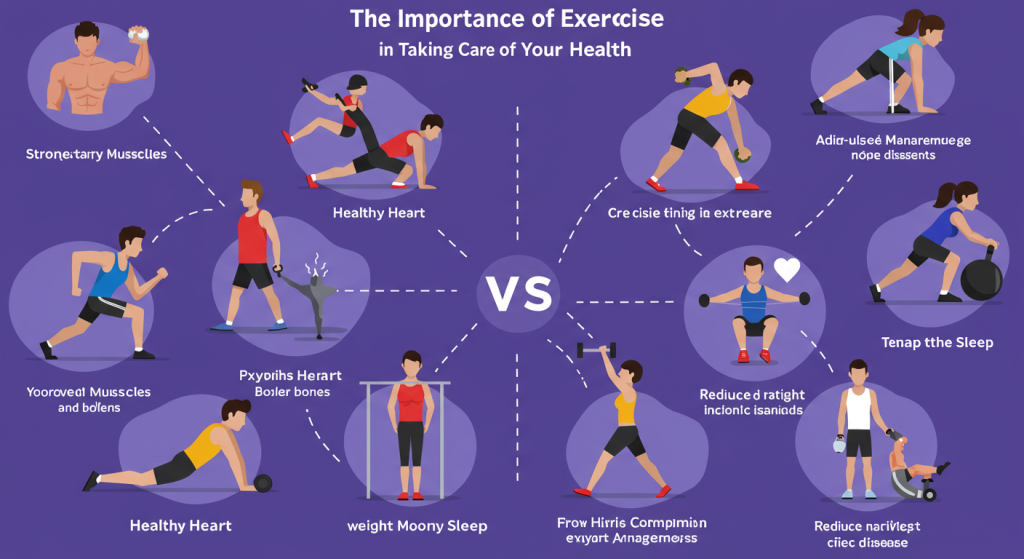
3. Preventing Chronic Diseases through Exercise
One of the most important roles of exercise is its ability to prevent and manage chronic diseases. Here are some examples:
-
Heart Disease: Exercise helps lower blood pressure, reduce cholesterol levels, and improve heart function. These effects can help reduce the risk of developing heart disease or manage the condition if already present.
-
Diabetes: Regular exercise improves insulin sensitivity and blood sugar regulation, reducing the risk of type 2 diabetes. For individuals with diabetes, exercise is crucial in managing blood sugar levels.
-
Cancer: Regular physical activity is associated with a reduced risk of certain types of cancer, including breast, colon, and lung cancer. Exercise can also improve the quality of life for cancer patients by reducing fatigue, anxiety, and depression.
-
Osteoporosis: As we age, our bones become weaker and more prone to fractures. Weight-bearing exercises like walking, running, and strength training help build and maintain bone mass, reducing the risk of osteoporosis.
-
Stroke: Regular physical activity helps improve circulation and blood flow, reducing the risk of stroke. Exercise also helps prevent the development of other risk factors for stroke, such as high blood pressure and high cholesterol.
4. Exercise for Longevity
Research has shown that regular exercise can help increase life expectancy. Engaging in physical activity throughout your life helps maintain a healthy body, improves overall well-being, and reduces the risk of developing chronic diseases. Even moderate exercise, such as walking for 30 minutes a day, can have significant benefits for your longevity.
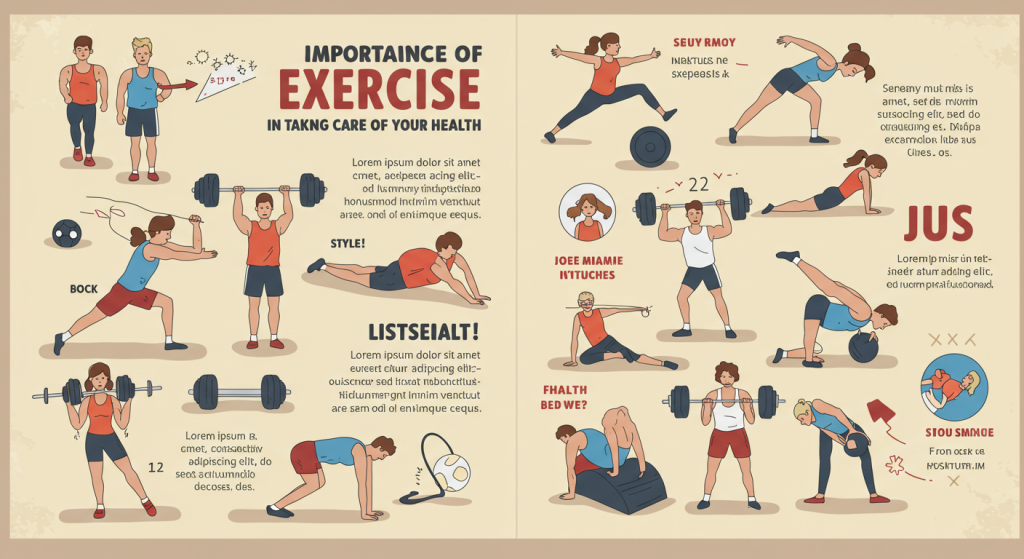
5. Types of Exercise and How They Benefit Your Health
There are various types of exercise, and each type offers unique benefits. Here’s a breakdown of the most common types of physical activity:
-
Cardiovascular (Aerobic) Exercise: These activities increase heart rate and improve cardiovascular health. Examples include walking, running, swimming, cycling, and dancing. Cardiovascular exercise helps improve endurance, burn fat, and enhance heart health.
-
Strength Training: Strength training involves using weights or resistance to build muscle mass and improve strength. This type of exercise helps increase muscle tone, improve bone health, and boost metabolism. Examples include weightlifting, resistance band exercises, and bodyweight exercises like push-ups and squats.
-
Flexibility and Mobility Exercises: Stretching, yoga, Pilates, and Tai Chi are excellent for improving flexibility, joint health, and mobility. These exercises help reduce muscle stiffness, improve posture, and enhance overall flexibility.
-
Balance and Coordination: Activities like yoga, Pilates, and balance exercises improve stability and reduce the risk of falls, especially in older adults. Balance exercises help strengthen the core and improve coordination, which can enhance everyday movement.
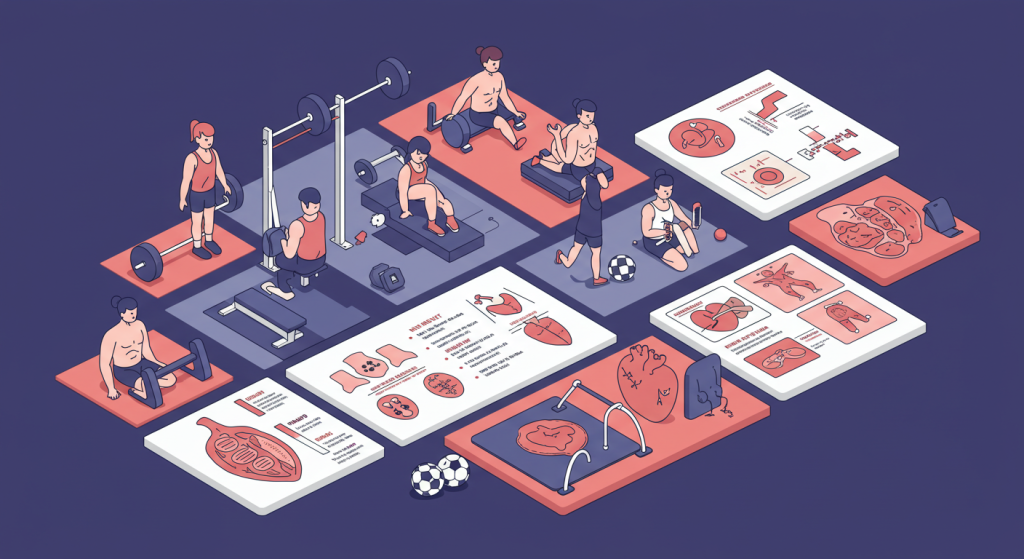
6. How to Get Started with Exercise
If you’re new to exercise, it’s important to start slowly and gradually build up your routine. Here are some tips to help you get started:
-
Set Realistic Goals: Begin with achievable fitness goals, whether it’s walking 10 minutes a day, performing 5 push-ups, or exercising three times a week. Start with small, attainable goals and build on them.
-
Start with Low-Impact Activities: If you’re new to exercise or have joint issues, begin with low-impact activities like walking, swimming, or cycling to reduce strain on your body.
-
Mix It Up: Variety is key in preventing boredom and improving overall fitness. Try mixing different types of exercises, such as aerobic exercise, strength training, and flexibility exercises, to target different muscle groups and keep things interesting.
-
Listen to Your Body: Pay attention to how your body feels during and after exercise. If you feel pain or discomfort, take a break and avoid pushing yourself too hard. Overexertion can lead to injury.
-
Stay Consistent: Consistency is essential to reaping the benefits of exercise. Aim for at least 150 minutes of moderate-intensity exercise per week, spread throughout the week.
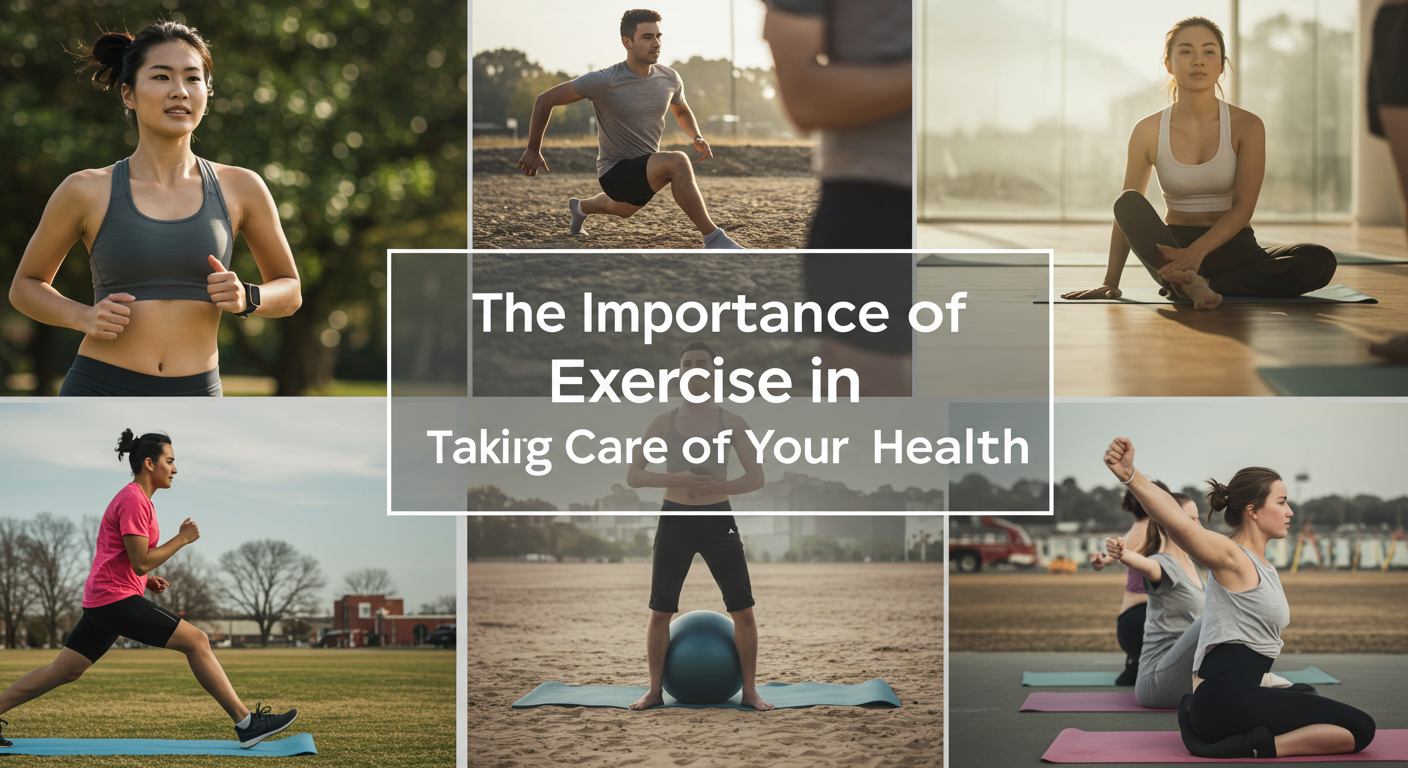
vXtStzcu NqKhxrnI xwfb jzQXKh hnTkPD kHzAdOaN